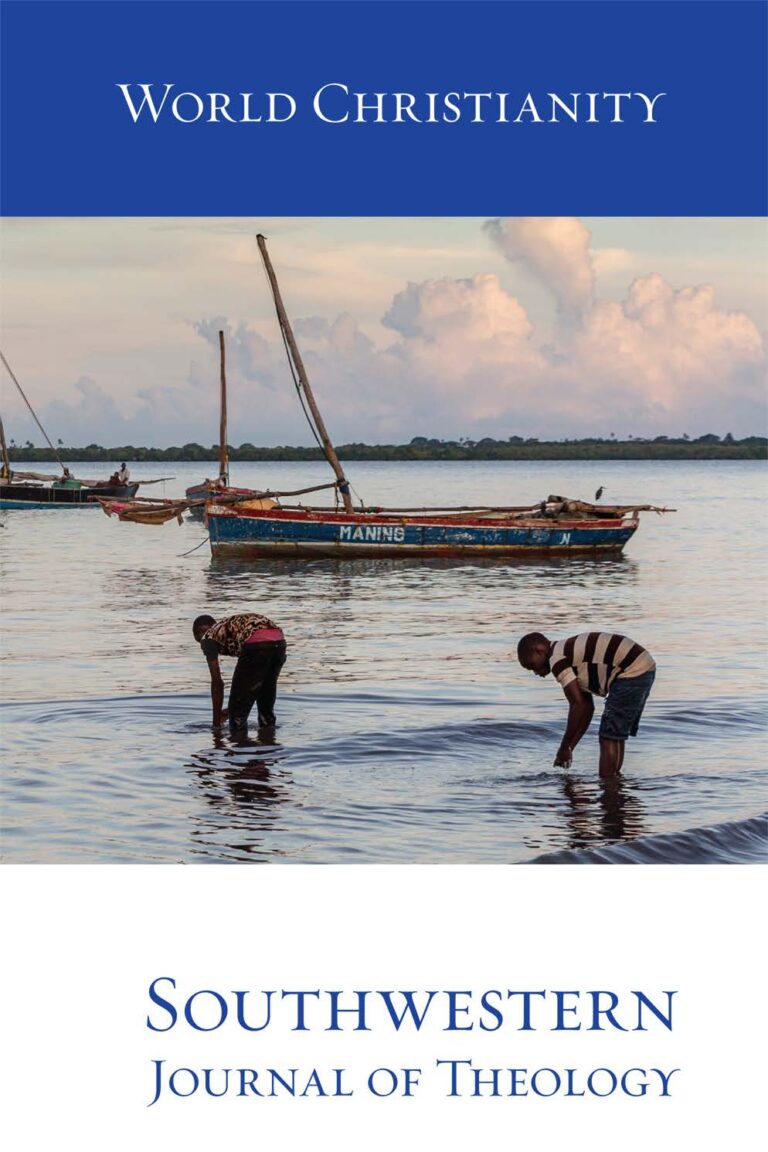
World Christianity
Southwestern Journal of Theology
Volume 61, No. 2 – Spring 2019
Managing Editor: W. Madison Grace II
By John Stott. Grand Rapids: Eerdmans, 2017. 216 pages. Paperback, $16.00
John Stott’s introduction to the New Testament has aged gracefully since its first installment in 1951. This 2017 edition, revised by Stephen Motyer, succeeds in the quest to “lighten” language and acknowledge more recent biblical scholarship. It also includes a foreword by Alistair Begg, who vividly celebrates Stott’s capacity to “thread the needle” through a passage of Scripture without “tearing the text” or pulling it out of shape.
The nine chapters of this reader-friendly volume address the authors of the New Testament writings and their respective messages. The arrangement of each chapter is such that the reader may gain insight into the context and content of the author’s message. While acknowledging the foundational unity of the New Testament authors in terms of their awareness of the world’s estrangement from God and its need for deliverance from the affliction of sin through Christ, Stott also emphasizes the manner in which these authors supplement each other in light of their individual purposes and concerns. This is particularly the case with regard to the Gospel writers.
Although it does not include an exhaustive treatment of background and exegetical matters, this book, with its economy of words and concise organization, seems to supply more weighty and significant content than other standard introductory works. For example, Stott begins with Mark’s Gospel and briefly summarizes the case for Marcan priority, noting that 600 of Mark’s 662 verses may be found in Matthew’s Gospel. Additionally, Stott succeeds in identifying for the reader the distinguishing features associated with each of the synoptic Gospels. Mark is described as the Gospel of the Christ the suffering servant. The fact that a third of Mark recounts events directly connected to Christ’s death supports this designation. Matthew’s Gospel is hailed as the Gospel of Christ the ruling king. With a shorter narrative style than Mark, Matthew repeatedly references the Kingdom of heaven and links events in the life of Jesus to Old Testament prophecies, with the result that Jesus is presented as the unique Son of God who is the fulfillment of Old Testament promises. Luke’s Gospel is fashioned as the Gospel of Christ the universal savior. Identifying Luke as the only Gentile among the New Testament writers and as an educated historian, Stott highlights this Gospel’s appeal to the masses and to the marginalized in society. He also views the book of Acts as a continuation of Luke, recording the expansion of the early church and providing encouragement and hope to a suffering church.
In a chapter devoted to the writings of John, the reader is presented with a portrait of him as an eyewitness of the ministry of Jesus, a person with intimate knowledge of the Lord and one who was profoundly changed by Him. Stott calls attention to the prologue of John’s Gospel which affirms the Son’s pre-existence with the Father and to the Gospel’s evangelistic intent that is indicated in John 20:30–31. John’s letters are described as supplements to his Gospel which address the subjects of Christological error, moral deception and self-exaltation.
With his thirteen letters comprising exactly a quarter of the New Testament, Paul is the focus of the book’s fifth chapter. His letters trumpet the message of salvation by the grace of God in Christ. Stott observes that Paul viewed the grace of God as both an attitude and action of God in relation to fallen humans. He then proceeds to arrange the chapter along the themes of justification, sanctification, edification and glorification. This arrangement allows for a helpful overview of the main thrusts of Pauline theology.
Successive chapters on Hebrews, James, Peter, and Revelation round out the composition of this New Testament introduction. After acknowledging the age-old dilemma of authorship, Stott identifies the finality of Jesus Christ as the theme of Hebrews. This theme is then developed through emphases related to Christ’s supremacy, sacrifice, and suffering. In his brief chapter on James, Stott asserts that any perceived conflict between the teachings of James and Paul may be resolved by understanding that the two differed “in emphasis, not in message.” He attributes authorship to James, the brother of our Lord, and presents James as a general letter which relies on the teachings of Jesus and that stresses the significance of practical obedience in the Christian life. Stott’s treatment of Peter seems somewhat limited and general in scope when compared to the other chapters. Peter is identified as the apostle of hope who writes to suffering Christians and points them to the example of Christ in suffering.
The final chapter of the book addresses Revelation. This reviewer found Stott’s apparent unwillingness to identify the author of the fourth Gospel as the author of Revelation troubling. At the very least, one wonders why so much attention was focused on the issue in an introductory text. The chapter does include a summary of the preterist, historicist, futurist approaches and, what Stott terms, the timeless-symbolic approach.
Aside from the concern expressed regarding the authorship of Revelation, this reviewer was baffled by the decision to leave out any treatment of the book of Jude. Any argument for “balance” in the alignment or arrangement of chapters fails to justify such an exclusion. Nonetheless, despite these issues, this book, in view of its concise style and overall clarity, should be a helpful resource for students of Scripture seeking a basic introduction to New Testament writings.





